Have you ever been in an awkward situation when someone has asked what kind of flowers you would bring to a funeral?
Or maybe, you’ve been trying to think of a unique and fitting gift for someone who recently lost a loved one. If so, this guide is perfect for you!
Here we will explore which flowers mean death and how to use them as condolences.
Which Flowers that Represent Death?
Are you curious about what the flowers that mean death are?
Whether you are curious about which are the best funeral flowers or you need to purchase some sympathy flower arrangements or funeral wreaths, knowing which flowers mean death is essential. Here are some good options to consider if you are looking for flowers symbolizing death.
Chrysanthemum Flower
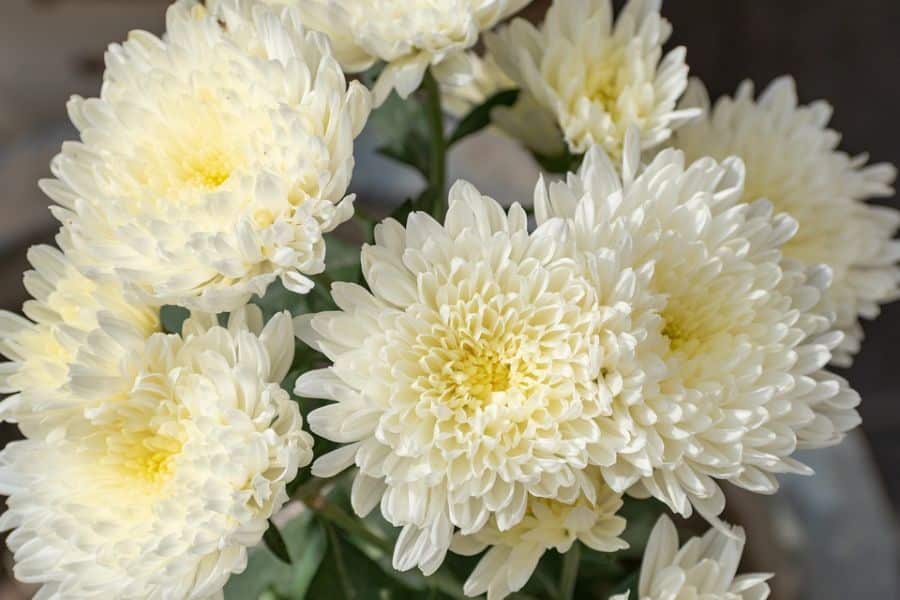
Chrysanthemums come in many colors such as yellow, red, white, pink and orange but they all have the same meaning when it comes to death—they stand for grief and sorrow.
These flowers are commonly given during times of loss because they express sympathy in a gentle way.
Poppy

The poppy is an iconic flower that is associated with remembrance, signifying the death of World War II soldiers. It has become a key flower to remember their sacrifice and the amount of suffering affected by war.
The poppy is used in many countries around the world to symbolize death, often in terms of memorial wreaths or even a field filled with poppies.
Memorial Day or Remembrance Day are two events that honor lives that were lost through war and conflict, typically showing up as poppies in lapels or Red Cross ad campaigns—making it truly stand out amongst other symbols of death in our society today.
Black Roses
The black rose has been a symbol of death for centuries and continues to be seen in funerals held today. Funeral wreaths fashioned from black roses are often thought of as a modern form of this symbolism and are used to express the grief of a family suffering from loss.
Black roses can also be found in artwork that relates to death, both historically and currently, serving as an iconic reminder of mortality.
They are also infused with other contemporary meanings involving feelings like mourning, despair, and fatalism. In this way, it’s no surprise that the black rose is often associated with death—it is deeply rooted in history but still remains relevant in modern symbolism.
Peach Roses
The peach rose is known for its symbolism of mortality and the afterlife. It can be used as part of an arrangement to honor the deceased, or it could be gifted to someone who has recently lost someone close to them.
The color of the peach rose has been linked to the concept of eternity, while its petals represent love and beauty.
Dracula Flower
Native to Ecuador, this flower gets its name from its dark purple hue, which resembles the color of dried blood.
In some cultures, it is seen as a funeral flower and can be placed on headstones during funerals or memorial services. It’s important to note that while it looks menacing, this flower is actually harmless!
Pink Roses
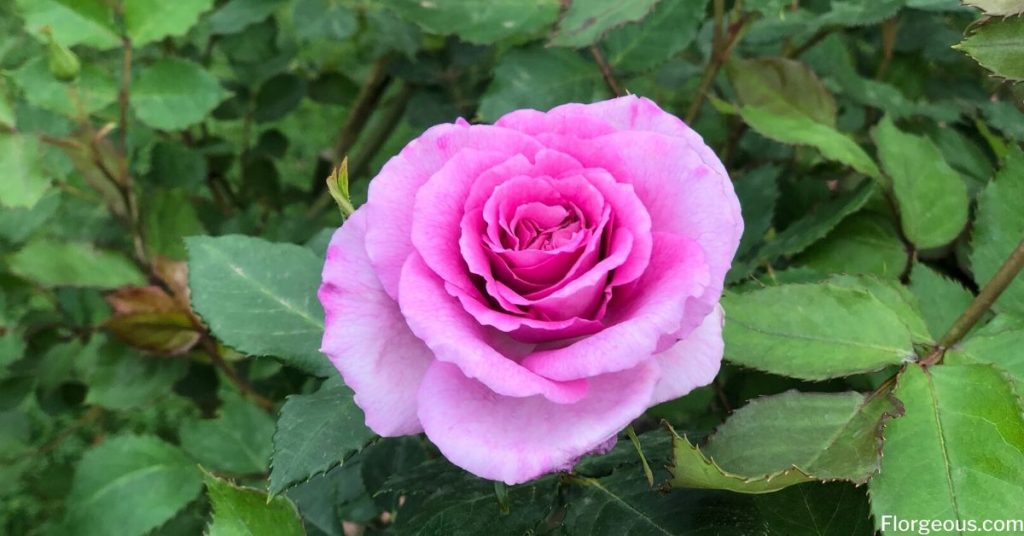
Pink roses are a popular flower choice to represent grief and death, both in funeral arrangements and more personal gifts.
Symbolically, the soft hue stands for gentle memories of life, whereas darker colors are thought to be more depressing or to evoke morbid reflections on death.
These flowers can be used in a variety of ways, from intimate expression of sympathy at times of loss to large bunches adorning a funeral casket.
No matter the occasion, pink roses offer the perfect combination of beauty and solemnity – showing respect for what was lost yet instilling hope for those left behind.
White Roses

One flower that is commonly associated with death is the white rose, often found placed in funeral arrangements to honor a lost loved one.
White roses tend to symbolize innocence, purity, and hope, particularly of resurrection, offering a comforting reminder during moments of grief.
Furthermore, this timeless bloom has an aesthetic beauty that makes it a popular accompaniment at memorials or gravesites. Therefore, the white rose not only embodies these sentiments of optimism but also provides comfort and serenity during difficult times.
Marigold
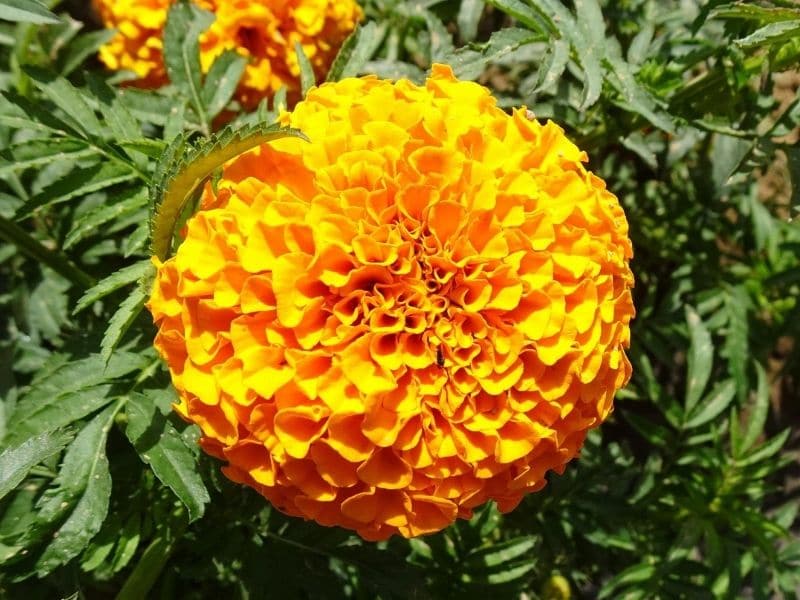
Marigolds have long symbolized death and mourning, even appearing in the basic sympathy flower arrangement due to their vibrant orange hue. They convey powerful messages of comfort and consolation while standing as a strong reminder of our impermanence.
In many cultures, they are used to commemorate fallen soldiers or decorate gravesites, as if the living are nodding in respect towards the dead.
Aside from body-rebuking rituals, marigolds can offer solace and hope for those who grieve a loved one’s passing. Celebrated for their tenacity and resilience through a tumultuous environment, marigolds can become an emblem of hope within adversity.
Daffodils
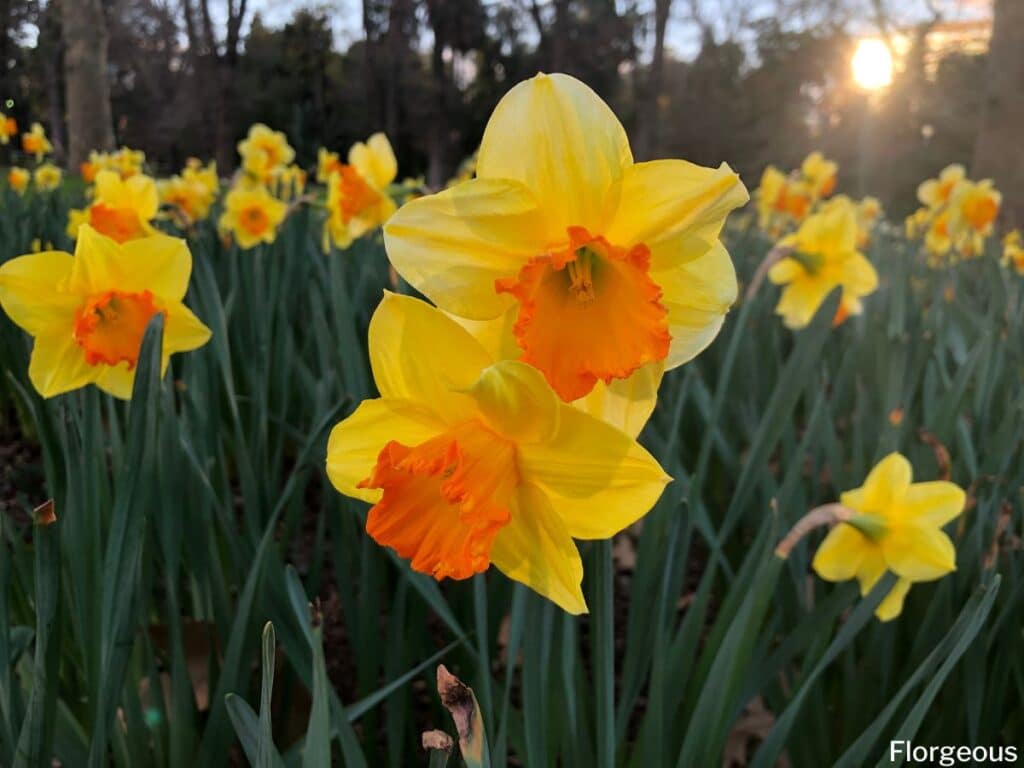
Daffodils are often seen in funerals because they symbolize eternal life or rebirth. These yellow blooms are often used to express hope that life will go on after death.
Forget-Me-Nots

Forget-me-nots are also commonly sent as funeral arrangements. This type of flower has long been associated with memories and memorial services, as its name implies. They represent comfort and solace during times of grief and sorrow.
Red Tulips
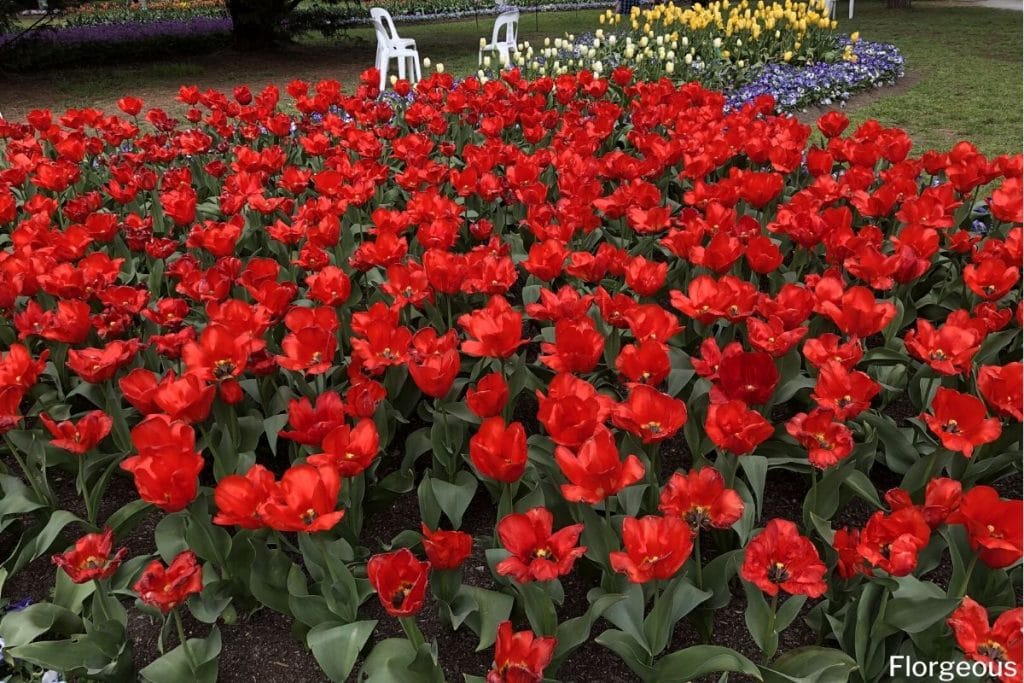
Red tulips are an interesting choice for funerals since tulip flowers usually symbolize true love or romance in other contexts.
In this case, red tulips represent deep sorrow – that even though the person is gone, their love remains strong and eternal.
White Lilies
White lilies are a common mourning flower – often chosen for funerals and memorial services, as these flowers are strongly associated with death in many cultures.
White is always a noteworthy color, as it stands for peace and purity. White flowers have gained their status as a symbol of death due to their association with funerals and the sad circumstances surrounding them.
White lilies represent the end of one life while promising hope of rebirth in another. They encourage us to accept the inevitability of death while recognizing that life can come out of it.
Lilies of white color are also sometimes known as ‘peaceful sleepers’ in relation to death, being similar to going to sleep and being reborn again afterward.
Pink Carnations
The pink carnation has a long history of symbolizing death. It is often given as a funeral flower and placed in baskets at wakes and funerals.
Originally thought to have been created by the tears of the Virgin Mary, carnation flower is used as a sign of remembrance for those who have passed.
Though the pink carnation holds deep spiritual significance, it can also be a loving reminder for those still alive, that those we loved and lost are never really gone from our hearts.
Red Carnations
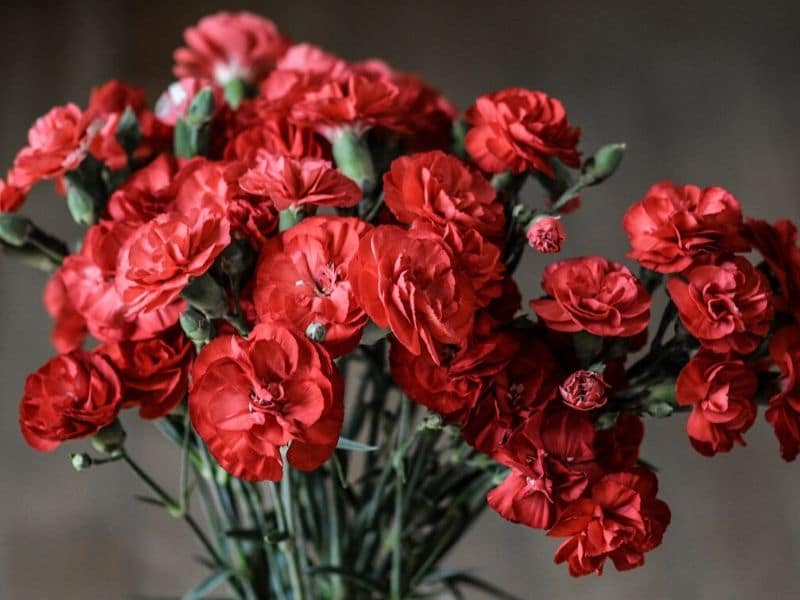
Funeral flowers have long been used to commemorate a loved one’s passing, and the red carnation is particularly known for its ability to symbolize death.
Commonly used in memorial wreaths and bouquets, it is also often seen decorating gravesites as a sign of remembrance for the deceased.
Red carnations specifically are associated with passion, admiration and deep love – perfect traits to represent the life of someone greatly missed. As one of the oldest funeral flowers, red carnations can be an appropriate way to remember those gone too soon.
Gladiolus Flower
The Gladiolus flower is often seen as a symbol of death by many people and cultures, making it one of the best sympathy flowers for funeral arrangements.
This flower is believed to represent strength in character, reminding us that someone’s passing is not the end.
Known for its pointy petals, this flower can be used to create impressive floral garlands that honor their memory and show appreciation for their life. Though its association with mortality can be seen as rather morbid, the Gladiolus stands as an enduring symbol of hope in difficult times.
Oriental Lilies
Oriental lilies have been a symbol of death for centuries, with delicate flower petals said to represent the fragility of life. The flowers have been associated with funerals and gravestones, and often used as symbols in artwork.
Perhaps most recognizably seen during times of grief, the flowers come in a very dark shade, which deepens the symbolism attached to them.
Lily petals carry a deeper meaning beyond their beauty; these graceful blooms are believed to protect against evil spirits as well as act as protectors from moral wrongs. From this perspective, oriental lilies might serve as reminders that life is finite and should be cherished each day.
Cowslip Flowers

Popular flowers such as roses and daisies are usually associated with love, joy, and life. However, flowers can represent more than just good times; a cowslip flower is an example of a flower that symbolizes death.
Popularized in Europe and North America, this small yellow flower grows in clumps and is often seen growing alongside roads and paths. Its bright petals, commonly compared to bells by early Europeans, were thought to signify the toll of a bell signaling eternal life.
This concept was reflected by the popularity of using cowslip flower petals in graveyards and memorials. Thus, the cowslip flower stands out among the majority of most flowers used to celebrate life as it has been adopted by many cultures as one of the few flowers that symbolize death.
Asphodel
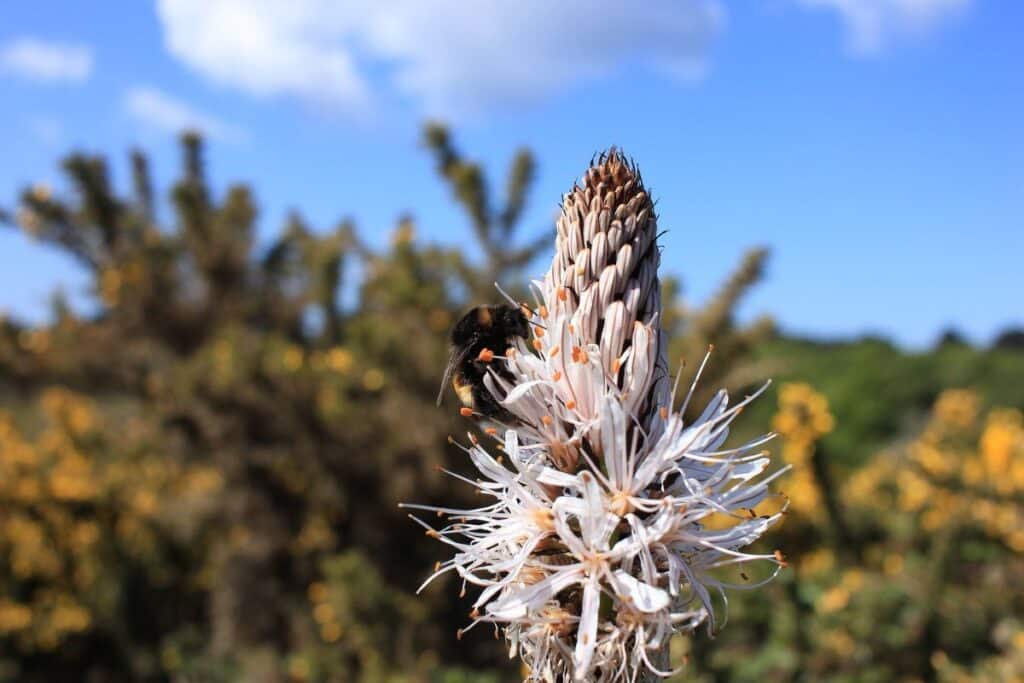
Sympathy flowers are a way to express our condolences and support during hard times. One flower in particular that has a symbolic meaning tied to death is the asphodel flower. This pretty bloom is known for its deep meaning, representing eternity in the afterlife and paying respects to those who have passed away.
It can also mean spiritual growth, as this flower symbolizes rebirth, so having an asphodel in your home or garden gives you an opportunity to think about life in a different and more meaningful way.
Orchids
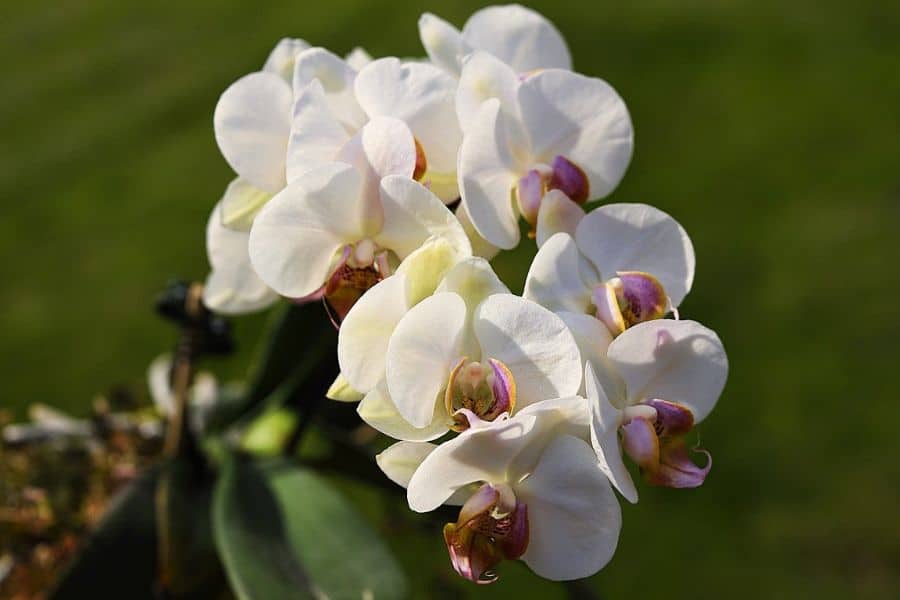
These exotic beauties can represent fertility and luxury, but orchids also symbolize death due to their association with the Greek goddess Persephone and her husband, Hades.
Furthermore, orchids are also some common flowers that represent loneliness.
Anemone
These delicate blooms are commonly used in funeral arrangements because they represent protection from evil forces and eternal life.
Dahlias
This flower is associated with saying goodbye to the deceased and can represent strength in sorrowful times.
Hyacinths
This gorgeous flower is often found at funerals because it represents sorrow, regret, and grief.
Peace Lily
This beautiful bloom often appears in a sympathy gift and memorial services as it stands for peace after death.
Blue Irises
In Victorian England, blue was the color chosen for mourning attire; thus, this lovely blue flower often represents sadness or loss at funerals.
Monkey Orchid
This quirky orchid is named for its appearance, which resembles monkeys playing around a gravesite—it symbolizes the cycle of life and death.
Madonna Lily
The white petals on this blossom stand for purity which makes it perfect for honoring those who have passed away.
Lilacs
The purple color of lilac fragrant blooms represent first love as well as mortality – making them ideal for remembering lost loved ones.
Red Spider Lily Flower
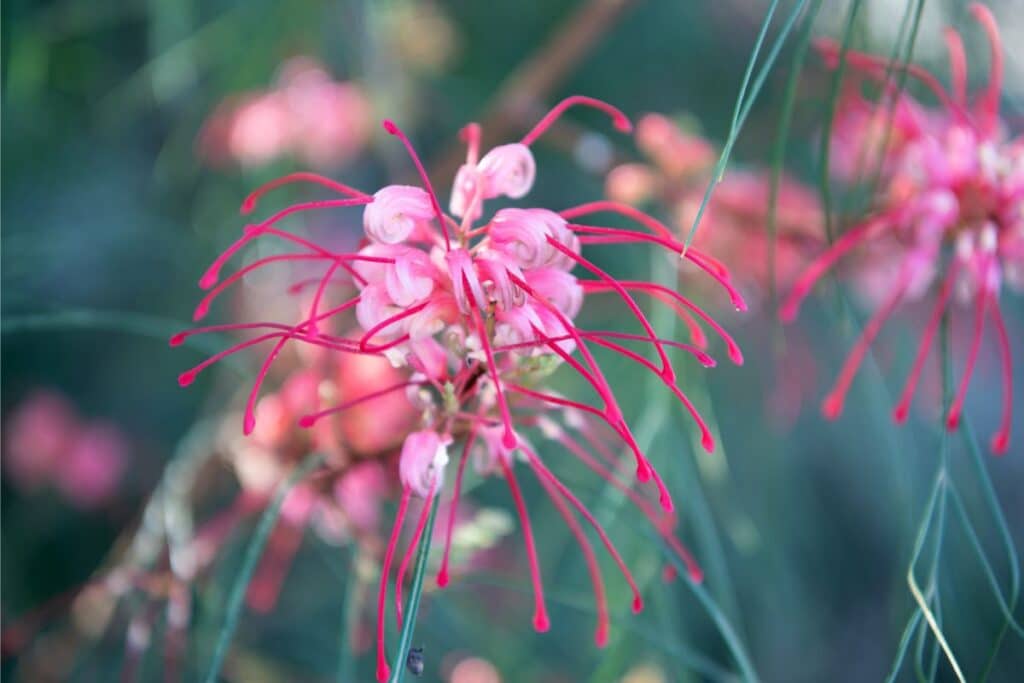
In Japan, this Red Spider Lily represents mortality because when it blooms red, it signifies that someone has died nearby, while in other cultures, it stands for rebirth or spiritual awakening after death.
Stargazer Lilies
These large lilies stand for sympathy due to their shape resembling an angel – making them one of the most popular funeral choices as death flowers everywhere!
FAQs
Do sympathy flowers have to be white?
No. Often the grieving family will appreciate the decedent’s favorite flower, perhaps yellow daisies, purple tulips, or bold red roses. Traditionally, funeral flowers are white, which signifies purity, repose, and rebirth. If in doubt, consider white flowers for sympathy or funeral arrangements.
What is the saddest flower meaning?
The forget-me-not is often associated with sadness, representing memories of loved ones who have passed away or feelings of grief and loss.
What is the flower of love and death?
The rose is commonly known as the flower of love, but it also holds symbolism related to death, especially the black rose, which signifies farewell or the end of a relationship.
What flower symbolizes pain?
The wilted or dying rose can symbolize pain, representing the end of something beautiful or the anguish of unrequited love.
What flower means painful love?
The ranunculus flower can symbolize painful love, as it is often associated with complex emotions and the challenges of navigating difficult relationships.
Final Thoughts
While flower symbolism has changed throughout the years, there are still many blooms that represent death. In Victorian times, people often communicated through flowers, and certain blossoms convey different messages.
For example, roses typically symbolize love and passion, but a black rose meant mourning or grief along with other flowers of death. Lilies were another popular choice for funerals because they represented the purity of the soul.
Today, you can see these flowers at almost any funeral as a way to honor the deceased. These flowers associated with death hold important meanings and should be appreciated.
Have you ever sent or received flowers that symbolize something other than their typical meaning? Learn more about flowers and their meanings on our blog!
See more: Flowers that represent life
*image by stetsik&ubrimo/depositphotos







